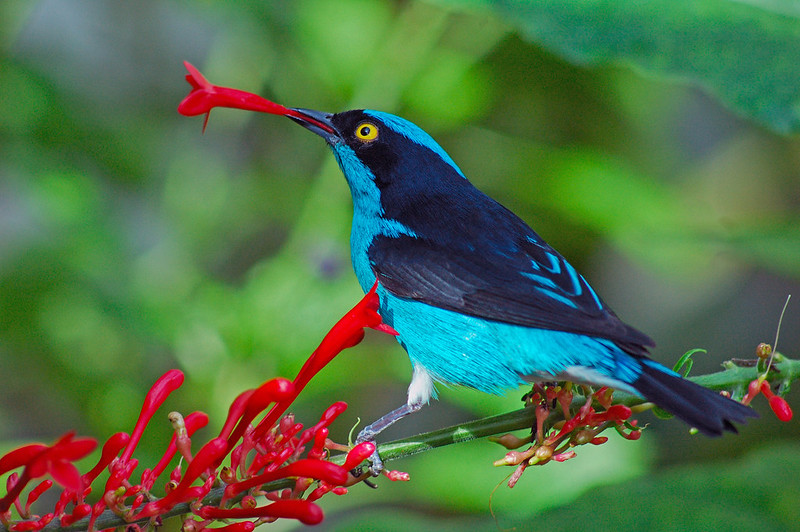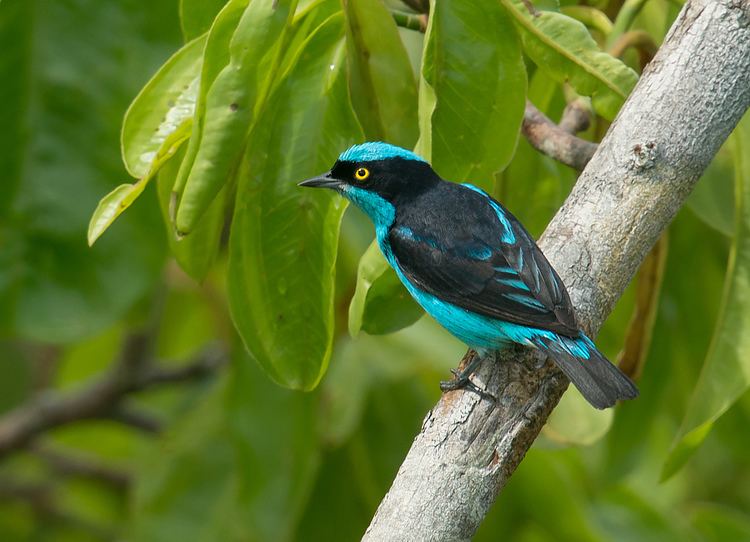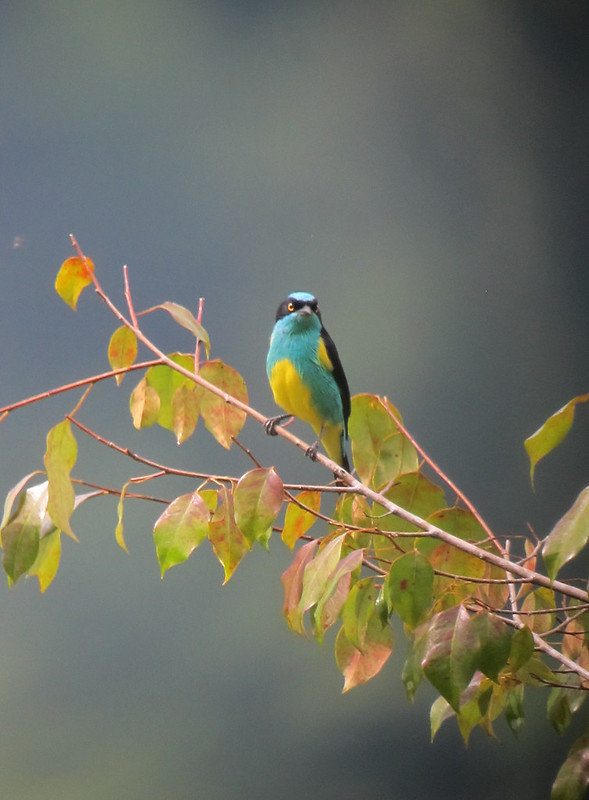The Enchanting Beauty of the Black-faced Dacnis: A Striking Bird with Captivating Colors
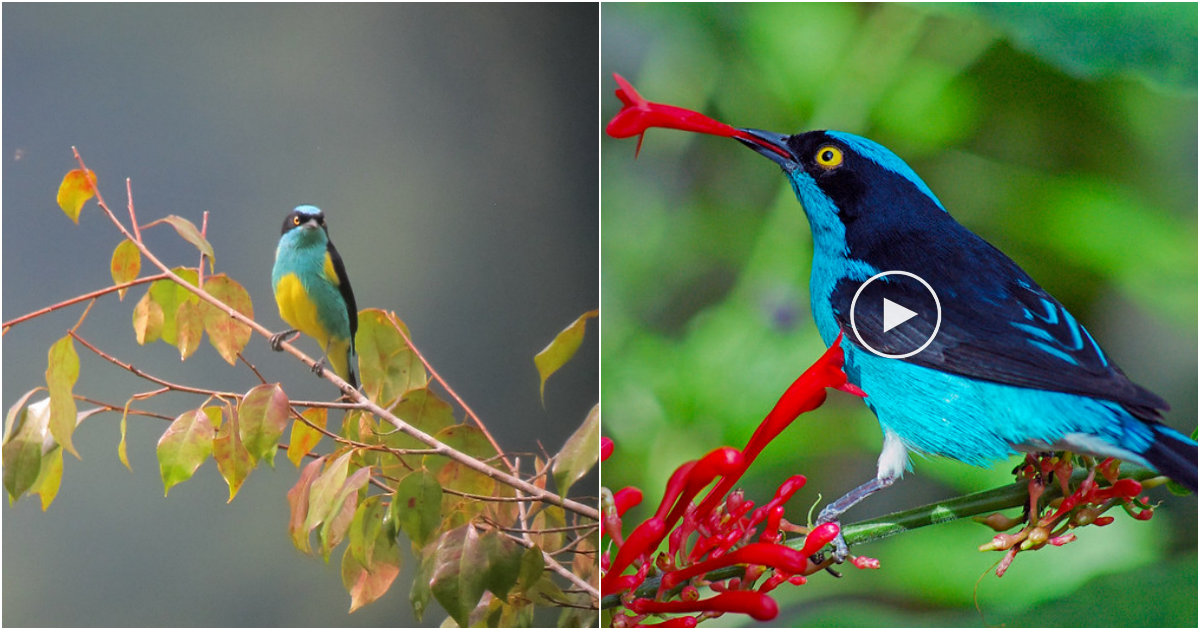
Introducing the Black-faced Dacnis, a breathtaking bird species with captivating shades of blue, white, and yellow, adorned with a distinct black mask that extends from its face down its back, resembling a velvet cape. This striking appearance makes the Black-faced Dacnis a truly remarkable sight.
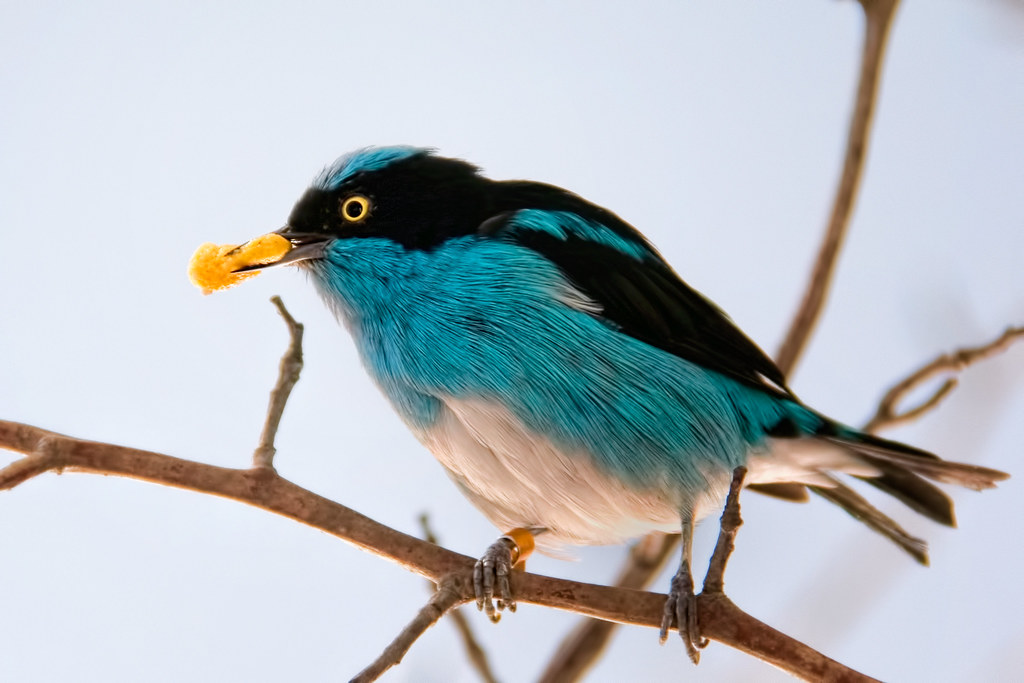
Scientifically known as Dacnis lineata, the Black-faced Dacnis belongs to the Thraupidae family. The males of this species are particularly eye-catching. They possess predominantly blue plumage on their undersides, with a white belly. However, one subspecies showcases a yellow belly instead of white. In addition, all individuals boast a blue crown and nape, accompanied by similarly colored fringes on their wings. Their eyes are accentuated by a vivid yellow iris, while their bills, legs, and feet exhibit a gray hue.
The female Black-faced Dacnis, on the other hand, is mainly olive-green above, with a lighter grayish shade on its underside. These birds can be found in various regions, including Bolivia, Colombia (northward), parts of Brazil, Venezuela, Guyana, and Suriname. The yellow-bellied members are specifically found in northwestern and central Colombia.
Black-faced Dacnis inhabit humid forests, as well as flooded or swampy areas within the Amazon and Chocó-Magdalena regions. They primarily feed on fruit, berries, seeds, and insects. Foraging at heights ranging from 10 to 50 meters above the ground, they explore the upper canopy of trees. However, they occasionally descend to lower levels to gather fruit from bushes.
During the breeding season, both the male and female Black-faced Dacnis engage in cooperative nest-building. The pair constructs their nest together, and the female takes on the responsibility of incubating three to five eggs while the male diligently provides her with food. Once the eggs hatch, both parents contribute to feeding the young until they are fully fledged.
Due to its wide geographic range, the population of the Black-faced Dacnis is currently not considered to be at risk of significant decline. As a result, it does not meet the criteria for population decline on the IUCN Red List.
In conclusion, the Black-faced Dacnis is a visually stunning bird species with its alluring combination of blues, blacks, whites, and yellows. Its distinctive features, including the black mask and striking colors, make it a captivating sight in the forests of South America.
